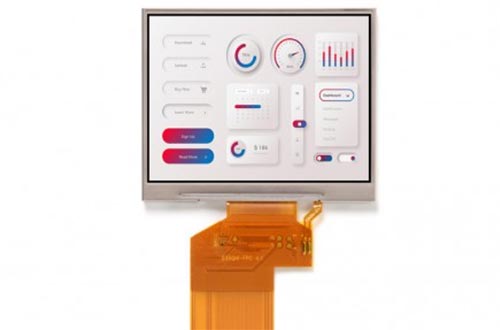What is the difference between TFT and LCD instrument cluster?
Views: 249 Update date: Aug 12,2024
TFT (Thin-Film Transistor) and LCD (Liquid Crystal Display) are both types of display technologies used in instrument clusters in vehicles, but they have some differences that impact their performance and applications:
TFT (Thin-Film Transistor): TFT is a type of LCD that uses thin-film transistor technology to improve image quality. It is an active matrix display, meaning each pixel is controlled by one to four transistors, which allows for faster response times, better color accuracy, and higher resolution compared to standard LCDs.
TFT LCD: TFT displays offer improved color reproduction, faster response times, and wider viewing angles compared to standard LCDs. This makes them ideal for modern instrument clusters that require high-quality visuals, such as digital speedometers, navigation maps, and customizable display layouts.
TFT LCD: TFT technology enhances viewing angles, allowing for better visibility from various positions within the vehicle, which is important for both drivers and passengers.
TFT LCD Instrument Clusters: Increasingly common in modern vehicles, particularly in mid-to-high-end models. They allow for customizable displays, integration with advanced driver assistance systems, and the ability to show more detailed and dynamic information.
Summary
TFT is essentially a type of LCD that offers enhanced image quality, faster response times, and better viewing angles, making it more suitable for modern, feature-rich instrument clusters in vehicles. Traditional LCDs are more basic and may be used in simpler applications.
1. Technology
LCD (Liquid Crystal Display): LCD is a display technology that uses liquid crystals to produce images. It requires a backlight to illuminate the screen since the liquid crystals themselves do not emit light. LCDs are known for their energy efficiency and are commonly used in a wide range of devices.TFT (Thin-Film Transistor): TFT is a type of LCD that uses thin-film transistor technology to improve image quality. It is an active matrix display, meaning each pixel is controlled by one to four transistors, which allows for faster response times, better color accuracy, and higher resolution compared to standard LCDs.
2. Image Quality
Standard LCD: While providing clear images, traditional LCDs can sometimes suffer from slower response times, limited color depth, and narrower viewing angles. These are generally sufficient for basic instrument clusters but may lack the sharpness and vibrancy found in more advanced displays.TFT LCD: TFT displays offer improved color reproduction, faster response times, and wider viewing angles compared to standard LCDs. This makes them ideal for modern instrument clusters that require high-quality visuals, such as digital speedometers, navigation maps, and customizable display layouts.
3. Viewing Angles
LCD: Traditional LCDs can have narrower viewing angles, meaning the image quality degrades when viewed from an angle.TFT LCD: TFT technology enhances viewing angles, allowing for better visibility from various positions within the vehicle, which is important for both drivers and passengers.
4. Brightness and Contrast
LCD: Basic LCDs might have lower brightness and contrast ratios, which can make them harder to read in bright sunlight or low-light conditions.TFT LCD: TFT displays typically offer higher brightness and contrast, making them easier to read in different lighting conditions.
5. Application in Vehicles
Standard LCD Instrument Clusters: Used in vehicles where cost is a consideration and where basic information display is sufficient.TFT LCD Instrument Clusters: Increasingly common in modern vehicles, particularly in mid-to-high-end models. They allow for customizable displays, integration with advanced driver assistance systems, and the ability to show more detailed and dynamic information.
Summary
TFT is essentially a type of LCD that offers enhanced image quality, faster response times, and better viewing angles, making it more suitable for modern, feature-rich instrument clusters in vehicles. Traditional LCDs are more basic and may be used in simpler applications.




